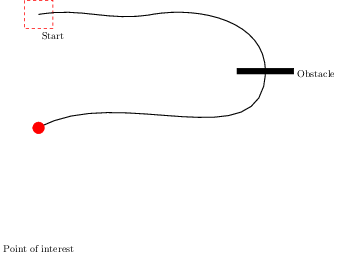Trust Validation Model
Whether or not we trust a source of information depends to a large extent on the source of that information. If the source of information is trusted, then we trust if it isn’t then we don’t. In other words, trust is a personal thing based on who the consumer of data have decided are their ultimate sources of trust. Trust then flows out from those sources through a graph of connections to the media item currently being consumed.
Unfortunately, understanding the source of information in the current digital landscape is challenging. Below we define a model for defining and understanding the flow of trust across a graph of cited media references. The eventual goal would be to implement this on top of a block chain solution like Ethereum
Definitions
Objects
- Articles
A work produced by an Author
Roles
- Consumer
An individual or entity that consumes an article
- Author
An individual or entity that authors an article
Relationships
- Authorship
The relationship between an Author and the Article authored
- Observation
The relationship between two Consumers for trust delegation
- Criticism
A negative relationship between two Articles
- Citation
A positive relationship between two Articles
- Consumption
The relationship between a Consumer and an Article
Introduction
We define information in the system by a set of relationships between Articles, Authors, and Consumers. Those relationships are established for by citations and criticisms between articles, consumption of Articles by Consumers and Observation relationships among Consumers. Trust is given by a Consumer to another individual or an Author through the Consumption of Articles, those Authorship relationships between Articles and Authors and the Citation and Criticism relationships between Articles.
Trust Example

The Trust Graph provides a visual representation of a group of historical authors connected via their works. A consumer of articles has shown over time that he has a high level of trust for Dante Alighieri, that indicates that he will also have some trust level with Ernest Hemingway and to a lesser extent Leo Tolstoy. The chain of relationships that define this trust model is as follows:
Dante Alighieri authored ‘The Divine Comedy’.
The Divine Comedy cites ‘The Sun Also Rises’ authored by Ernest Hemingway
‘The Sun Also Rises’ cites ‘War and Peace’ authored by Leo Tolstoy
For every step away from the trusted author the level of trust for the connected author is reduced. Leo Tolstoy will not be as trusted as Ernest Hemingway and Ernest Hemingway will not be as trusted as Dante Alighieri.
Distrust Example
Distrust or lack of trust works the same way as Trust work but in a negative way. A consumer of articles that has a high trust level for Virginia Woolf will have a low trust level with Edgar Allen Poe. The chain of relationships that define distrust are as follows:
Virginia Woolf authored ‘Mrs. Dalloway’
Mrs. Dalloway criticises ‘Angel of the Odd’ authored by Edgar Allan Poe
Delegated Trust
Trust can also derive from another consumer of articles. Referring to Figure 1, Will Huntington is Consumer. He has an Observer relationship with Fox News. In this model, Will Huntington inherits the trust and distrust relationships that Fox News has created. In Figure 1, Will Huntington has a Trust Relationship with Edgar Allen Poe, through his observer relationship with Fox News. To follow another relationship chain:
Will Huntington observes Fox News
Fox News is a Consumer of ‘The Divine Comedy’ authored by Dante Alighieri
‘The Divine Comedy’ cites ‘The Balloon Hoax’ authored by Edgar Allan Poe
Further Work
In the examples above we have provided simplistic relationship chains. In a functioning ecosystem of articles citations and criticisms, trust and distrust will be much harder to validate. An algorithm must be derived to define the trust/distrust relationship for each article.
Further work must also be done to leverage Ethereum token model so that citations and criticisms have some cost associated. Otherwise, Authors in the system have some ability to manipulate the trust relationships of their consumers.
There might be an opportunity to include global factors into the trust metric as well. If not directly as part of the trust metric for a particular author, then as information for the consumer on how his trust metric for that author looks compared to the trust metrics for that author for some subset of the population. This may allow the system to get around some of the problems of consumer who only consume information that agrees with their world view. ⤧ Previous post Correctly Orienting the Recruiting Org to the Business